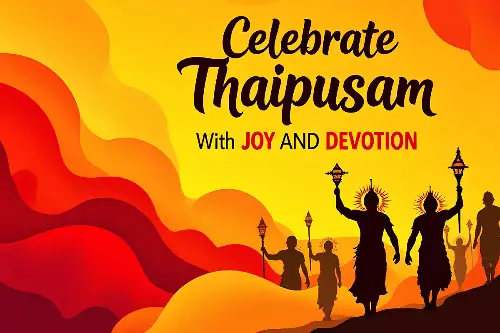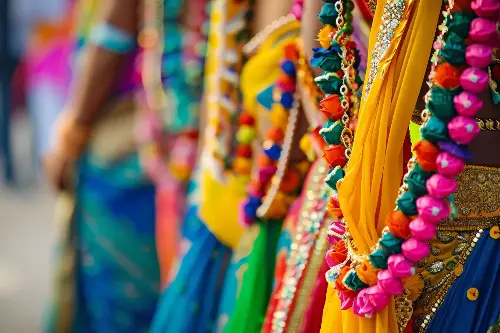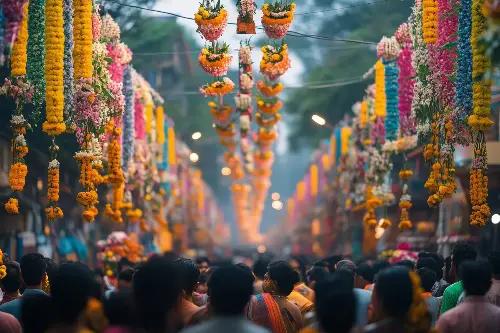Every year, as the moon reaches its fullest state in the Tamil month of Thai, which typically falls in late January or early February, a resounding symphony of devotion, endurance, and vibrant festivities grips various parts of the world. Thaipusam, a festival predominantly celebrated by the Tamil community, is a profound expression of faith, showcasing a fusion of cultural riches and spiritual intensity.

The Origin and Significance of Thaipusam
Thaipusam is rooted in Hindu tradition and associated with the worship of Lord Murugan, also known as Kartikeya, the deity of youth, power, and virtue. It commemorates the occasion when Parvati, the universal mother, gifted Murugan with a Vel (spear) to vanquish the demon Soorapadman and restore peace. For devotees, this festival symbolises the victory of good over evil, light over darkness, and truth over untruth.
A Testament to Endurance and Devotion
Perhaps the most captivating aspect of Thaipusam is the Kavadi Attam, the 'burden dance' where devotees undertake a pilgrimage along a set path while bearing various types of kavadi (burdens). Some carry milk pots as offerings, while others may shoulder elaborately decorated structures attached to their bodies. The most striking are those with skewers and hooks piercing their skin, demonstrating an extraordinary commitment to their faith and the power of mind over pain.
Preparation for the Festival
Devotees prepare for the festival with great care, observing a month-long fast of purification and adherence to a strict vegetarian diet. They engage in daily prayers, seeking spiritual strength to carry out their vows. Abstinence from material pleasures and increased spiritual practices during this period results in heightened religious fervour.
Colours, Sounds, and Sights
Thaipusam is a visual spectacle like no other, with its procession of devotees accompanied by the rhythmic beat of drums, the melodious tunes of the nadaswaram, and the chanting of prayers. The air is perfumed with incense, and streets are decorated with colourful arches. Devotees dress in vibrant yellows and oranges, colours associated with Lord Murugan, adding a rich hue to the already enchanting atmosphere.

The Role of Community and Family
The festival is as much a communal event as it is an individual journey. Family members and friends walk alongside the kavadi-bearers, offering words of encouragement and support. They help to maintain the celebratory mood, ensuring that those performing penance remain focused and uplifted. This collective participation highlights the unity and bonding within the Tamil community.
Global Celebrations
While Thaipusam is observed majorly in Tamil Nadu, India, its celebrations have crossed the seas to places with significant Tamil diasporas such as Malaysia, Singapore, Mauritius, and South Africa. Each location embraces the festival with its own local customs and rituals, yet the essence of faith and devotion remains constant.
The Chariot Procession
In some traditions, a grand chariot procession features prominently in the festival. The chariot, carrying the idol of Lord Murugan, travels from a temple through the streets to the sounds of devotional singing. Crowds gather to catch a glimpse and offer prayers, with some even pulling the chariot as an act of merit.
Experiencing Thaipusam
Visitors and tourists often flock to experience Thaipusam, drawn by its astonishing cultural displays and deep-rooted spirituality. It’s an unparalleled opportunity to witness the extent of human devotion, dedication and the multicultural fabric that makes up the global Tamil community.

Reflections of Spirituality
Beyond its visual and cultural elements, Thaipusam offers a moment for deeper reflection on the power of faith. It is a time when human resilience shines through, as do themes of sacrifice, fulfilment of vows, and purification.
In summary, Thaipusam is much more than a festival; it is a pilgrimage of faith, a testament to cultural identity, and a vibrant celebration of life and spirituality. Whether participating or observing, one cannot help but be moved by the profound commitment of its devotees, the unity of the community, and the rhythmic beat of a tradition that continues to resonate through the ages.
